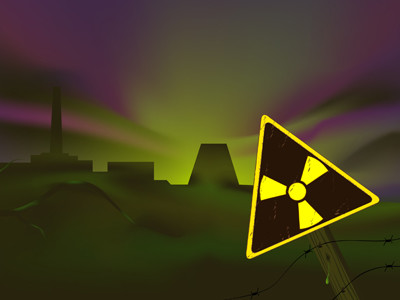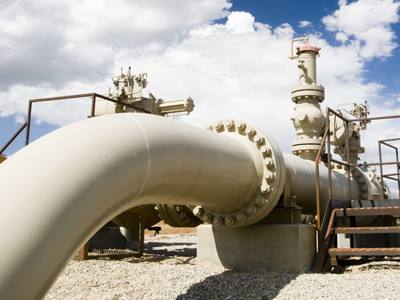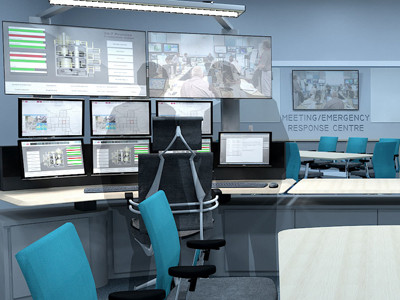Increased operational costs for offshore drilling and diminishing financial returns from lower oil prices have made oil and gas business leaders focus more on operational excellence. Operational excellence requires effective design and operational efficiency (especially on maintenance), better asset and human operator performance, improved health and safety compliance and enhanced project planning and control capability using technology.
Human Factors Engineering (HFE) or Human Factors Integration (HFI) aims to incorporate human factors knowledge into systems engineering, so that it is part of all complex systems throughout their life cycle. In the nuclear industry, human factors is seen as central to the safe and effective design and running of all nuclear facilities. The International Atomic Energy Agency (IAEA) recommends that:
Systematic consideration of human factors, including the human-machine interface shall be included at an early stage in the design process for a nuclear power plant and shall continue throughout the entire process.
Human Factors has a major role in the prevention of personal injury and dangerous occurrences such as hydrocarbon releases associated wells, pipelines etc., dropped objects, collisions, subsidence or collapse of the seabed, problems with lifting equipment or evacuation of installations.
When incidents are reviewed or risk assessments are conducted, the Human Factors issues that typically arise include:
- Individual risk perception
- Overestimating own abilities
- Underestimating the consequences of familiar hazards
- Failing to recognise subtle changes to familiar tasks
- Collective influences such as safety culture
- Deviations from processes mistaken for ‘efficiency’ or ‘innovation’
- Reluctance to slow or halt activities regardless of circumstances
- Organisational, technical or environmental influences affecting human behaviour
- Designs/configurations do not match operator expectations
- Critical information is not clearly communicated or understood
#CIEHFchat
In conversation with…
Jon Berman, Director of CIEHF-accredited consultancy, Greenstreet Berman Ltd
1. As recruitment for decommissioning increases, what are the main considerations teams need to make when developing new engineers/teams?
Decommissioning presents new tasks, in new contexts, with new business objectives. Furthermore, at a tactical level those tasks and objectives are constantly changing. There’s a real challenge in thinking about the required competences, the appropriate culture, and the manner in which those teams are managed. It would be a mistake to assume that simply because staff have a background in the nuclear sector that they will automatically adopt an appropriate decommissioning culture and mindset. When building a team, it’s essential that thought is given to how the team will be managed, and how an appropriate culture within the team will be fostered and sustained – and that this is high on the agenda.
2. What do you consider to be the biggest safety challenge for nuclear decommissioning and how can human factors support safety in this industry?
Driving the necessary culture change, and sustaining it, is a real challenge, particularly for the power generation side of the industry. Moving from a need to maintain a steady (and safe) state, and to generate income, and to minimise outage time, towards a state of continuous change and unfamiliar situations, represents a set of novel demands on management for safety. Human factors offers a focus on ways of designing the system to be able to meet these demands.
3. The Nuclear Decommissioning Authority says safety at Dounreay has ‘deteriorated’ last week – do you have a comment to add to this issue?
I can’t comment on any alleged change in safety performance at Dounreay (or any other licensed site). However, all High-Reliability Organisations need to be sensitive to the potential for safety performance to drift, undergoing gradual and incremental change. There needs to be effective means of identifying and responding to weak signals. This challenge will be all the more significant for a decommissioning organisation where the evolving nature of tasks and demands makes the distinction between ‘work as imagined’ and ‘work as done’ all the more important, and being able to monitor that gap becomes all the more difficult.
4. With high recruitment, training and equipment costs, why should human factors professionals be brought on board and when is the right time to employ them?
Successful decommissioning isn’t about addressing any one single element – it’s about developing an effective and coherent system. Human factors should be central to helping to achieve this. The tasks, and the equipment needed to deliver them, must be optimised for the role of the operator and the safety claims made upon them. There will be pressure to use existing processes and systems rather than designing new processes from scratch (after all, decommissioning is a time-limited and finite activity, and one that generates no revenue). Human factors needs to be able to help support good decision-making (both at the design stage and during operations). Human factors also helps to ensure that the organisation is capable – that it has the right resources in terms of competent people, available at the right time and deployed in the right manner. Importantly, in terms of competence, the organisation needs to be confident that it understands what are the required competences, and knows how to develop, maintain and assure them. That applies equally to design and to operations. Furthermore, due to the constantly changing nature of decommissioning activities and the differences between decommissioning and normal operations (both of which might be taking place side-by-side on the same site), there must be an effective Learning process – capable not only of identifying learning opportunities but also able to drive (and monitor) change. Human factors should be supporting these elements, and therefore should be involved from the inception of any decommissioning project.
5. If you were stood in front of a senior decommissioning team, what would be your one big statement?
The success of decommissioning will be built on the performance of the people involved – those who design the tasks and equipment, those who assess and assure safety, and most importantly, those who undertake the tasks. That success will only be achieved if proper consideration is given to the human elements of the system – and ergonomics and human factors is able to assist in the development and implementation of a complex socio-technical system that can be responsive to the dynamic technical and safety challenges of decommissioning, whilst also being mindful of the programme and financial drivers. People will make the process resilient – but the design of the socio-technical system must support and encourage that resilience through effective design of tasks and management systems. Safe decommissioning is about managing change – permitting and controlling it where it’s needed whilst constraining and limiting it where it’s not desirable – it’s a human process.
6. Why should nuclear professionals attend the CIEHF’s Human Factors in Nuclear Decommissioning event and what key learnings will they take away?
As we move into a decommissioning environment it’s vital that we recognise how that environment is different from what we’re familiar with – and then create an effective system. The challenges of decommissioning are all about the issues that Human Factors Specialists have experience of addressing – supporting a balanced design, understanding compliance, managing competence, managing change, responding to uncertainty, and sustaining resilience. This conference provides an unparalleled opportunity to explore these critical issues with human factors practitioners who have real experience of providing practical solutions to them.



